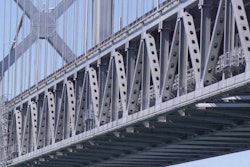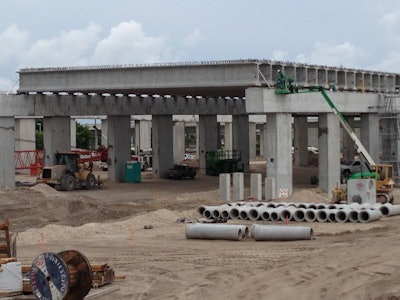
Design-build, a method to deliver a project in which the design and construction services are contracted by a single entity, has emerged as the ideal solution in many cases. In contrast to a more traditional approach (design-bid-build) that involves design, bidding and then construction, design-build uses a single point of responsibility contract, which is used to minimize risks for the project owner as no matter the nature of the fault in the project, the contractor is responsible. While the traditional model involves the selection of a designer and a contractor that are often at odds, the design-build method changes the work sequence. Design-build gives project owners a single-point of responsibility in an attempt to reduce risks and overall costs.
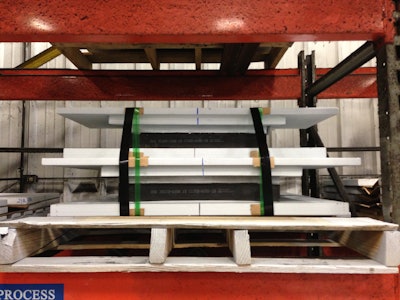
A single price is quoted for the entire project. In this process, the same parties are involved from beginning to end so there is intimate knowledge of all phases of the project, allowing for smooth coordination of the process.
For example, on a traditional project, the designer (architect) may be paid a fee based on a negotiated percentage of the overall project cost or a flat fee, therefore giving very little incentive to meeting the budget. In contrast, fees on a design-build project are established upfront and if money is unused in a project, it is passed along as savings to the owner or the team, depending on the contract. Overall, expectations are outlined in a more transparent manner and the owner has a lot more control over the project, while still benefitting from a single source of responsibility.
The method also offers the opportunity to reduce the duration of the project schedule as the design and construction phase of the project overlap. Simply, time is money. Using the design-build method gets the structure to the completion phase much faster, so it is available to be used as intended by the property owner. Parallel work shortens lead times. Although it isn’t a good fit for all projects, it should certainly be considered.
The method has gained great acceptance in commercial construction sectors during the last decade and more recently, it has made huge inroads with public officials as it has become legal by most states for infrastructure projects.
“By being involved upfront with the contractor and their designer, D.S. Brown has proven that they can be innovative and create economies to assist in keeping costs down while including efficiencies to help speed up production and to keep the project on track,” says Bob Rose, national sales manager of the Bridge Products Division for D.S. Brown.
Design-build in Miami
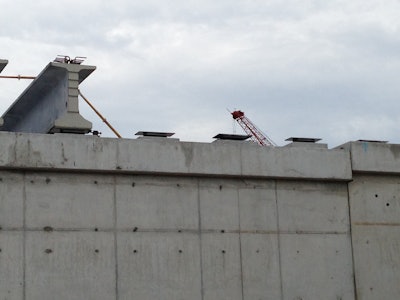
D.S. Brown was brought in by the joint venture of Condotte America, Community Asphalt and The Demoya Group, to supply bearings and joints. D.S Brown helped design the HLMR bearings and Finger Expansion joints in conjunction with lead designer, Finley Engineering.
D.S. Brown’s products fit the need for bearings and expansion joints by perfecting the design. D.S. Brown is one of the few companies with the engineering expertise to do the design work themselves. Most bearing manufacturers have to rely on private design firms for bearing and joint design and then they just build what is designed. With the in-house expertise, D.S. Brown could work back and forth with Finley Engineering in order to refine the design.
Cleared for takeoff in Fort Lauderdale
Fort Lauderdale–Hollywood International Airport (FLL) in Broward County, Florida, is a major airline hub, serving more than 23 million annual passengers. In 2003, the county began planning an expansion to meet increasing demands. This Airport Expansion Program covers a wide range of activities, including the extension of the southern runway, Runway 9R-27L, to accommodate larger commercial jet aircraft.
The project is designed to extend the boundaries of the airport by raising one of its runways up and over a major highway and rail line. One part will expand an existing 5,300-foot-long landing strip into a new 8,000-foot-long south runway that sits on a 60-foot-high man-made embankment. Additionally, perpendicular to the new runway, two concrete bridge structures will separately support the new runway and taxiway. The runway support structure measures approximately 584 feet long and 800 feet wide, while the taxiway structure is about 422 feet wide and 724 feet long.
The Airport Expansion Program is using 1,732 D.S. Brown Versiflex Elastomeric Bearings — a total of 1,065 bearings for the runway structure and 667 bearings for the taxiway structure. D.S. Brown’s Versiflex Elastomeric Bearing Assemblies can be custom molded using neoprene or natural rubber. The bearings can be non-reinforced, laminated or sliding bearing assemblies.
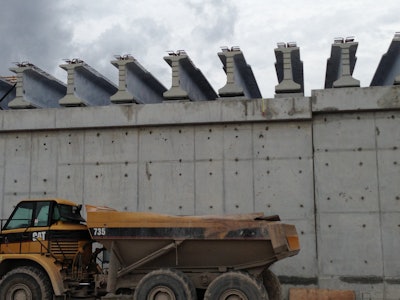
Since a great deal of time was spent in the design stage, the production schedules were extremely tight. A well thought out, detailed production plan was necessary. The D.S. Brown office staff and supply chain manager kept on top of the orders to ensure that the steel, Teflon and stainless steel were received in a timely manner.
The majority of the runway bearings are Type 4 mobile bearings. The project required 805 bearings in a very short timeframe, so all areas of production had to be on track. This included machining, shim cutting and prep, load build, molding, vulcanize patching, load testing, cutting and dimpling of Teflon, epoxy bonding, stainless steel shearing, stainless steel welding and metalizing. As a way of tracking the progress, D.S. Brown created spreadsheets with graphs and logbooks to manage the project critical processes.
The construction on FFL is ongoing and scheduled to be completed in September 2014.
Design-build a success
When implemented from the beginning, design-build can be a savings in money and time for the owner. Subcontractors, materials and timelines are planned out in advance, before the contract is signed. All parties are working to help the owner build in a timely manner and stay on budget. D.S. Brown has found through working closely with the contractor and owner, the engineering group can efficiently design bearings and joints that meet the individual needs of each project.
“During the past five years we have participated in the tremendous growth of the design-build process in the U.S. infrastructure market,” says Tom Lewis, vice president of marketing and sales, D.S. Brown. “We see the design-build growth continuing as owners turn to private investment in their struggle to fund their infrastructure needs. With a staff of 28 in our engineering department we are uniquely positioned to participate as partners with the design-build team. We are invested in this process and committed to provide our partners the highest quality products, on time and on budget.”
Contributed by Kari Moosmann, AEC senior editorial director at Constructive Communication, on behalf of D.S. Brown.







